Common Health Issues in Reptiles and How to Prevent Them
It’s crucial to remember that even while you cannot completely prevent bacteria, viruses, parasites and other microorganisms from infecting and growing in your reptile, you can do your best to maintain a stable environment that reduces the risk of such diseases.
This may be done by routinely cleaning your reptile’s vivarium, feeding dishes, and the environment to the right temperatures for each species. Too much heat can result in burns that become infected, and too much moisture increases the risk of dangerous bacteria growing. Additionally, it’s a good idea to always wash your hands before and after contacting any reptiles although humans are far more tolerant of disease and infections than they are (and vice versa). Common health issues in reptiles and how to prevent them are thoroughly discussed in this article. Read More!
Recognizing a Sick Reptile
Many signs and symptoms of common reptile disorders are the same, and although one or two indications might not help you to accurately identify what is wrong with your pet, it is essential to get skilled veterinarian treatment if you detect these types of indications. Typical signs of a disease include:
- Excretions or diarrhea that contain a lot of blood or mucus
- Loss of balance or unusual movement
- Weight loss, refusal to eat, or lack of appetite
- Discharge or vomiting from the nose or mouth
- Trouble breathing, such as sneezing or coughing
- Overall listlessness, lack of energy, or lethargy
Because many indications are nonspecific and might be indicative of a variety of diseases, a professional veterinarian diagnosis is required to guarantee that your pet reptile receives the appropriate therapy.
Common Health Issues in Reptiles and How to Prevent Them
Reptiles are susceptible to a variety of various infections and diseases. While some species of reptiles are more prone to specific illnesses than others, some of the most typical issues to look out for include:
Ear Infections:
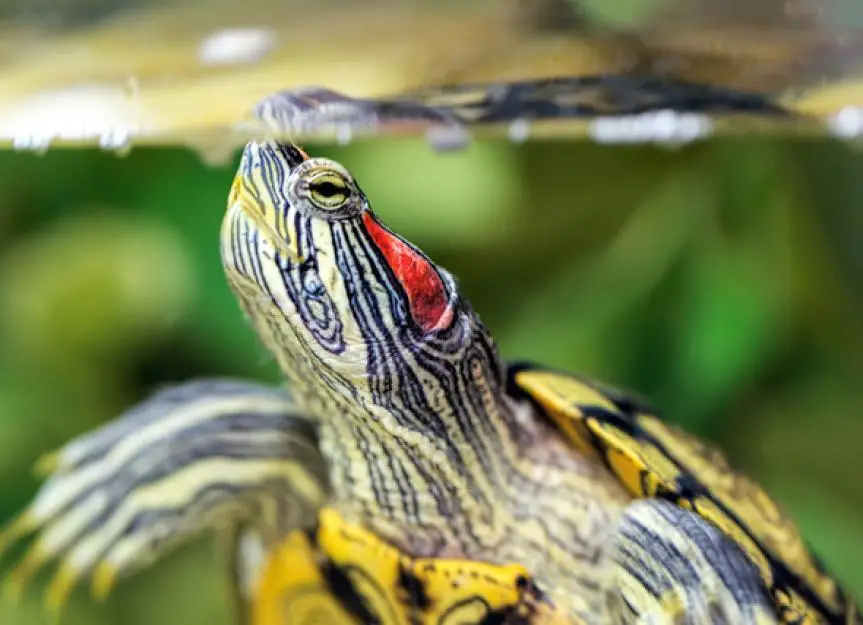
Image credit @ PetMD
Aural abscesses, or ear abscesses as they are commonly known, are rather frequent in tortoises and turtles and are typically caused by bacterial infections. The eustachian tube, which connects the ear to the mouth, is where the infection starts in the mouth and continues up into the ear canal. The main signs of an ear infection include a bulging eardrum, pus behind the ears, and pain while opening the mouth. Other signs include shaking in the head and general sensitivity near the ears.
Treatment:
The ear must be surgically opened to remove the hardened pus, and then antimicrobials must be flushed through the ear canal. It is frequently utilized for turtles in captivity, but it might also be used on wild turtles in wildlife rehabilitation.
Prevention:
Sanitary conditions play a crucial role in prevention. Food and water dishes should be replaced and cleaned every few days, and the habitat’s surfaces must be kept clean. Chemicals shouldn’t be utilized while cleaning the habitat or bowls; instead, the owner and veterinarian could discuss safe cleaning methods.
Fungal infections:
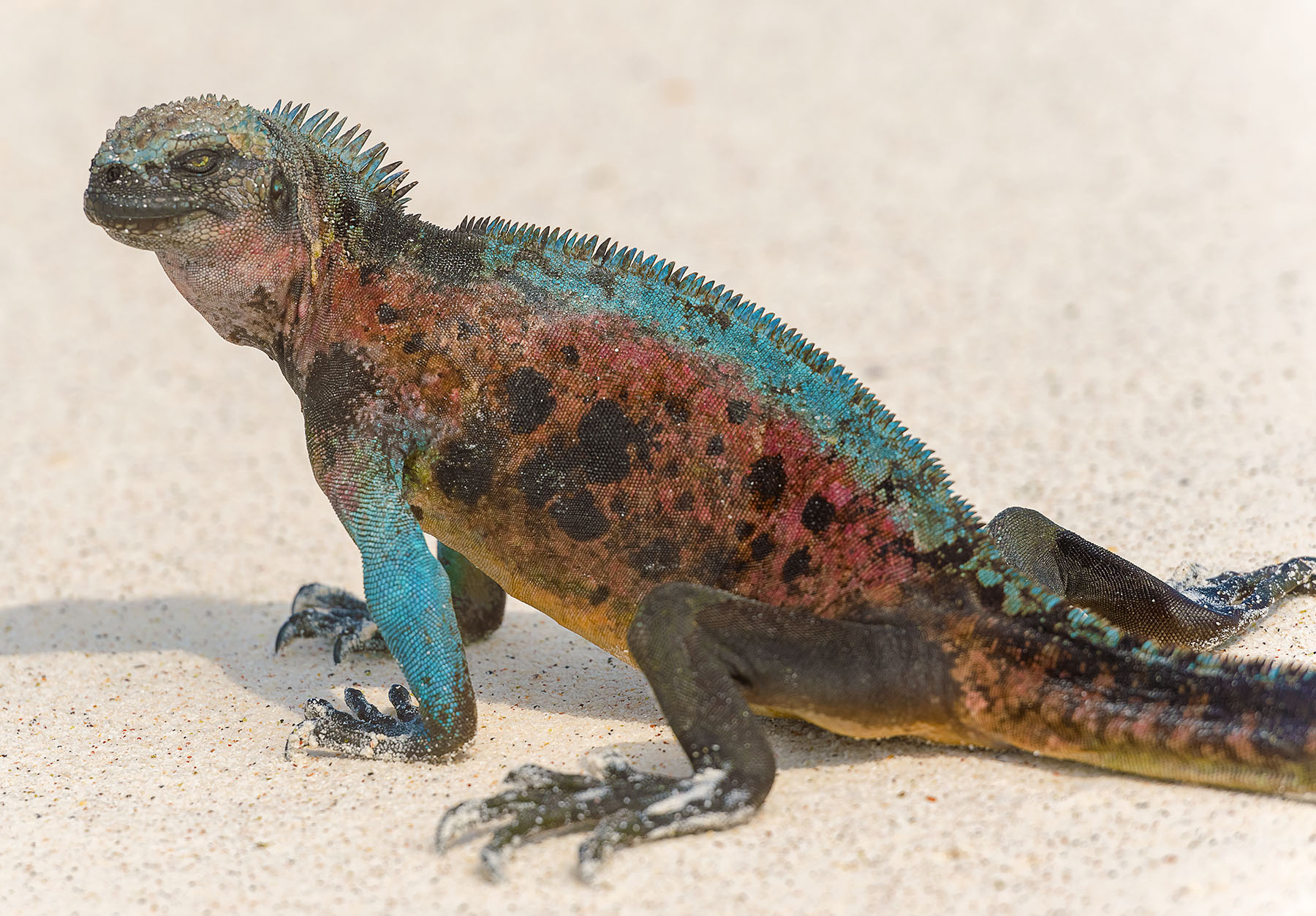
Image credit @ ScienceDirect.com
These can be caused by bacteria that develop from living in damp environments. While this may be the ideal setting for some reptiles, it doesn’t indicate that it should not be checked. A weak, damaged, and damp skin condition will develop. There have been reports of fungal infections in several species of captive reptiles that affect the upper and lower respiratory systems, the integumentary system, and the GI tract. Rarely identified in reptiles, systemic mycoses are often discovered after death.
Treatment:
It’s a good idea to use an anti-fungal spray made specifically for reptiles or visit your veterinarian who specialises in exotic pets. The infection in the reptile is treated with antifungal medications. The animal seldom makes a full recovery, which is unfortunate. Removal of the fungus mass in the infected area by surgery can be effective. However, to avoid any subsequent infections, an antibiotic course is typically advised after surgery.
Prevention:
A well-balanced diet and good sanitation may reduce the incidence of fungal diseases in reptiles.
Parasitic Infections:
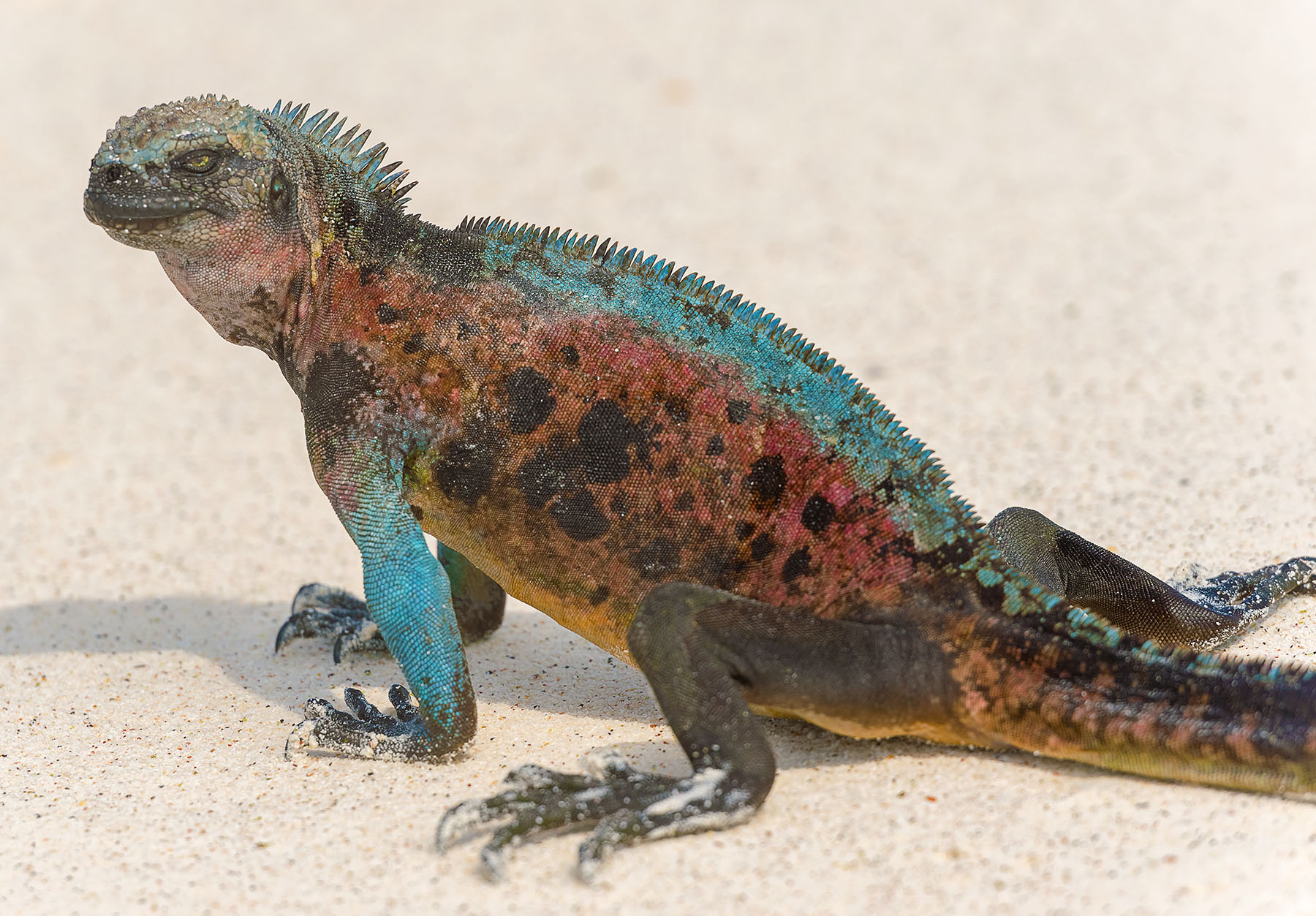
Image credit @ The Veterinary Nurse
Reptile parasites have a high rate of reproduction, are capable of spreading swiftly across an entire collection, and can result in fatal illness. One of the most prevalent intestinal parasites is the worm. The most prevalent parasite infections in reptiles are pinworms, hookworms, and roundworms (including ascarids).
Treatment:
Dewormers or anthelmintics that kill the parasites or assist the reptile’s body in getting rid of them are used as a treatment for intestinal parasitism. Others don’t respond well to any therapy, even though some antibiotics or medicines are effective against particular types of microparasites. Cestodes and trematodes are eliminated by praziquantel. It can be administered intravenously or orally. Many sulfa medications are utilized to treat coccidia, and they can all have negative effects on animals who are dehydrated or have renal issues. An oral drug called piperazine is used to eliminate nematodes.
Prevention:
In addition to maintaining a clean enclosure, visiting a veterinarian routinely for checkups and dewormings is a smart approach to keep your reptile free of parasites (or to keep the number of parasites that have been identified in the reptile low).
Amebiasis:
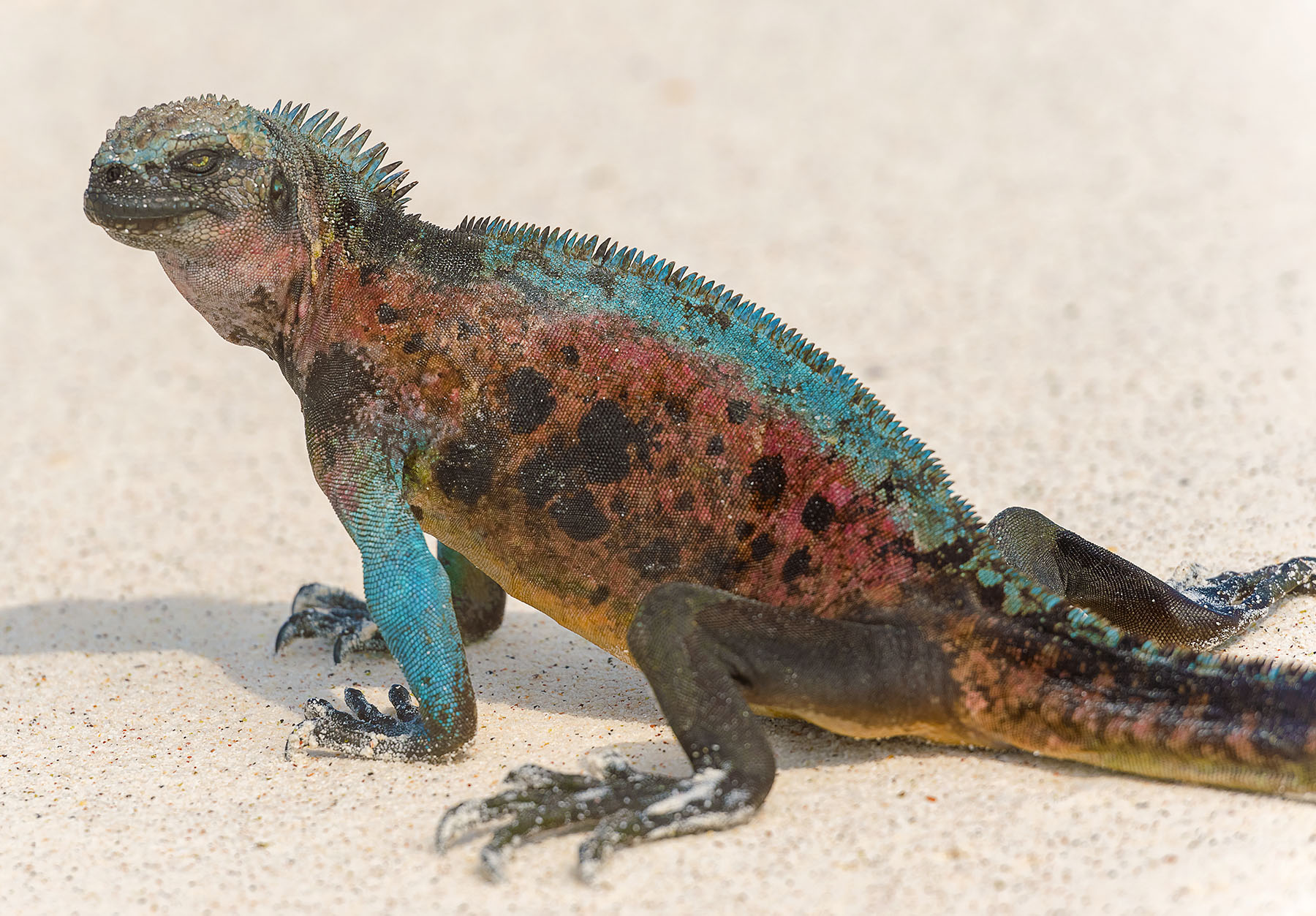
Image credit @ PetMD
Amoebiasis is a serious protozoal condition that affects reptiles and is characterized by non-specific clinical symptoms such as anorexia, lethargy, and diarrhea. The outcome is typically acute death. Amoebiasis in reptiles like lizards and snakes is caused by Entamoeba invadens. The fecal-oral pathway, commonly known as the primary mode of transmission for Entamoeba invadens, involves ingesting infected feces.
Treatment:
The reptile veterinarian will prescribe antiprotozoal medications, such as metronidazole, an amoebicide for the reptile, to treat this infection.
Prevention:
If a reptile’s habitat is maintained clean, it is less likely to have amebiasis. Avoid getting in contact with diseased reptiles.
Cloacitis:
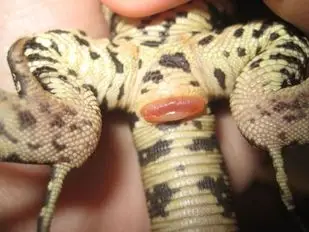
Image credit @ Tegus From Around The World
In reptiles, the ends of the urinary system, reproductive, and gastrointestinal tracts combine to produce a single opening to the external environment. The vent or cloaca is the name of this structure. Cloacitis, an infection and inflammation of the cloaca in reptiles, can occur.
Kidney stones or other stony accumulations in the urinary system, reproductive tubes, or lower intestine can result in infection of the cloaca, which is the channel for both urine and feces in reptiles. Bloody discharge and swelling from the cloaca are its defining symptoms.
Treatment:
Surgery to remove damaged tissues, antiseptic cleaning, use of a topical antibiotic ointment, and injectable or oral antibiotics can all be used to treat the cloacal infection itself.
Prevention:
A healthy diet can aid in cloacitis prevention.
Metabolic Bone Disease:
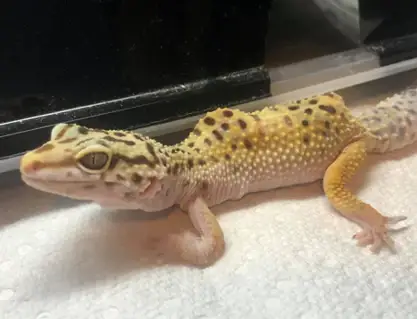
Image credit @ Zen Habitats
When it comes to reptiles, the phrase “metabolic bone disease” (MBD) refers to a condition in which the bones are affected by a combination of poor diet (low calcium, low Vitamin D, and high phosphate, ), kidney disease, or insufficient UVB light (resulting in calcium and Vitamin D deficiency). This illness can result in abnormalities such as soft shells in turtles or bent legs in reptiles. Reptiles that solely eat insects or plants are more likely to develop MBD because they consume inadequate calcium. Most in danger are tortoises and lizards because they need calcium supplements to aid in their growth.
Treatment:
Splinting or casting of broken bones is a common form of treatment. It will be required to take calcium supplements orally or via injection. In some circumstances, injectable fluids and antibiotics may be needed. Longer-term, diet modification and exposure to UVB or natural light are required.
Prevention:
MBD in reptiles can be prevented with the installation of sufficient UV lights and a timing mechanism. Much better, you may acquire a thermostat-controlled UV heat lamp to assure your pet gets enough light and heat. It will also be helpful to do some research on the proper nutrition for your kind of reptile and any supplements or special care they need. Most metabolic bone disorder instances are preventable. A nutritious, well-balanced diet will lower the probability of MBD developing. Your reptile has to be kept at the proper temperature to utilise calcium properly.
Mouth Rot:
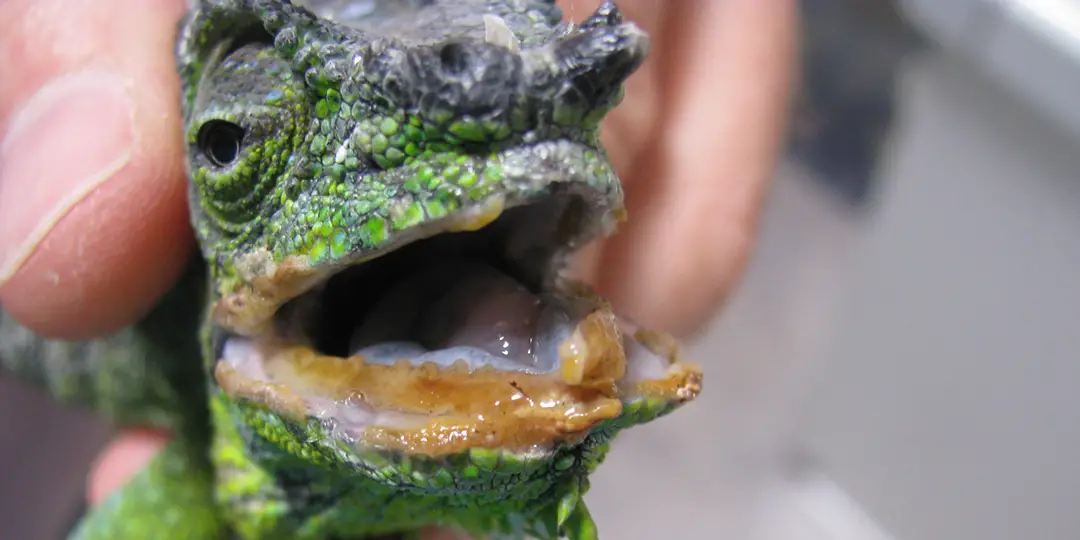
Image credit @ Chameleon Academy
Mouth rot, also known as Ulcerative Stomatitis, is an infection of the mouth and gums of your lizard caused by food particles stuck and small cuts in his teeth. It is caused by a bad nutrition as well as poor humidity and temperature levels in a reptile’s environment. The infection might kill your reptile if it is not treated. Lizards and snakes are particularly susceptible to the disease. Fortunately, mouth rot may be easy to care for and monitor.
Treatment:
Cleaning the reptile’s mouth with an antiseptic and a course of antibiotics and are typically used as treatments for mouth rot. In severe situations, surgery to remove severely damaged oral tissues may be required. Animals who are recovering but unable to consume food or liquids may require nutritional assistance and hydration treatment.
Prevention:
Keep it healthy is the simplest method to prevent mouth rot in reptiles. Ensure your reptile is taking a balanced, high-quality food. A clean terrarium habitat is maintained by disinfecting it once a week and checking it every day for debris or leftover food.
Viral Infections:
Reptiles can be susceptible to viral infections just like any other animal. Some common viral diseases in reptiles include:
Adenovirus:
They have been reported in a variety of reptile hosts, especially kingsnakes and bearded dragons. Liver, intestinal, and neurological disorders are among the lesions reported in reptiles in association with adenovirus-like agents. Loss of appetite, inappetance, and increased liver enzymes are common features of the clinical manifestations. The indications often appear in bearded dragons between the ages of 4 and 7 months. In most cases, confirmed-positive animals die.
Treatment:
For any adenovirus found in reptiles, there is no vaccination. Patients who are exhibiting symptoms of disease get supportive care, such as assist feeding, fluid therapy, anti-inflammatory drugs, and liver support medications (if available) antiviral drugs e.g., oseltamvir (Tami-Flu).
Prevention:
Because the adenovirus is very contagious, infected reptile must be kept entirely separated from other reptiles for ninety days to prevent the infection from spreading. To lessen the risk of transmitting an adenovirus to the group, new recruits to a reptile collection must also be isolated.
Iridovirus:
They can result in tissue necrosis in the spleen, liver, and kidney. RBCs can be attacked by the virus, which can lead to severe anaemia. Iridoviruses have been discovered in fish, insects, amphibians, and reptiles.
Treatment:
Supportive care in the form of diet and fluids. Correction of stress factors that might lead to immunological suppression, such as poor husbandry, if it’s a contributory factor.
Herpesvirus:
They have been detected in several species of reptiles. Although clinical symptoms might vary, they could include pneumonia, neurological symptoms, oral plaques, weakness, nasal discharge, lack of appetite, vomiting, and regurgitation.There have been reports of herpesviruses in snakes, crocodiles, alligators, and lizards. They frequently lead to cutaneous papillomatous and fibropapillomatosis lesions in a European green lizard, as well as disorders in sea turtles.
Treatment:
Antiviral medications are frequently recommended by a veterinarian to treat the illness. The drug may be an ointment (to be applied to mouth sores) or an oral medication (for generic therapy of the disorder).
Prevention:
Isolate the infected reptile and any reptiles that have come into contact with it to prevent the infection from spreading. Don’t let sick animals brumate or go into hibernation. Herpesvirus disease prevention also involves maintaining a stress-free environment and using good husbandry techniques.
Flavivirus:
It is possible to acquire this RNA virus by eating infected insects. This virus may infect reptiles and cause encephalitis, liver disease, stomatitis, and even death.
Poxvirus
The indications of this virus will comprise skin lesions throughout the body, but especially on the reptile’s head. It is mostly associated with lizards and tortoises among other reptiles.
How To Keep Your Reptile Healthy:
It is crucial to keep your reptile’s habitat in excellent condition to keep your reptile healthy because most of the most prevalent reptile diseases are transmitted through an unfavourable environment.
- Routinely monitor the humidity and temperature levels in the area and make any required changes to keep the values within your pet’s recommended limits.
- Regularly remove any debris, excrement, soiled bedding, leftover food, and other objects from the enclosure and clean and disinfect it.
- Give your pet a healthy, balanced meal while paying close attention to all of their minerals and vitamins requirements.
By providing your reptile with this level of care, you can keep it healthy and keep away many of the most prevalent diseases that can kill a pet reptile.
Conclusion:
Reptiles can make wonderful pets, but if you don’t perform the necessary research first, they could be difficult to care for. Reptiles frequently contract a variety of various diseases and infections. Not all disorders and ailments affecting reptiles may be prevented. However, it may be simpler to identify symptoms of bad health if you completely study your reptile species and understand what’s normal for them. You can simply take action to keep your reptile pets healthy and content if you can identify the most typical reptile diseases. Common health issues in reptiles and how to prevent them are discussed in detail in this article.
FAQs:
How can reptiles protect their body?
The scales, which are composed of very durable keratin, protect reptiles from damage and keep them from losing water.
What do reptiles need to survive?
Reptiles need a suitable habitat as well as sources of heat, water, and light for housing. Before bringing your reptile home, make sure the habitat is entirely prepared and safe.
Why should we protect reptiles?
Reptiles have critical roles in the ecosystem’s functioning: as prey, they provide an important food supply for mammals and birds and as predators, they manage their prey populations. They act as helpful biological indicators of how well their ecosystem is doing.







